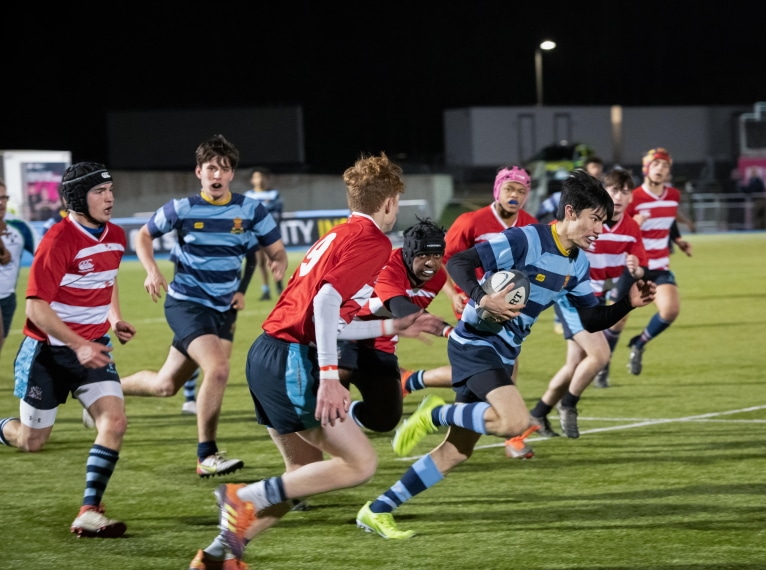
QE’s First XV pulled on their navy and sky blue-hooped shirts for one last time as they took on rivals Habs at Saracens’ StoneX Stadium, 99 years after the fixture was first played between the two schools.
 The evening got off to a great start, with resounding wins against Haberdashers’ Boys’ School by the Year 8 A and B teams, who racked up scores of 65-0 and 45-0 respectively.
The evening got off to a great start, with resounding wins against Haberdashers’ Boys’ School by the Year 8 A and B teams, who racked up scores of 65-0 and 45-0 respectively.
And, with the First XV buoyant after two consecutive wins against St Ignatius College and Watford Grammar School, hopes were high that they could avenge their loss to Habs earlier in the season in the National Vase.
In the end, it was not to be – Habs overturned a half-time 10-0 deficit to emerge as narrow victors on the night – but Head of Rugby James Clarke had nothing but praise for his players: “It was a great game with a monumental defensive effort and a result that could have gone our way on a different night. The squad has come an awful long way from the early season struggles after a year of missed rugby due to COVID. I am extremely proud of the effort, attitude and commitment that the whole squad have shown this year.”
The games proved a big draw across the Elizabethan community. “It was lovely to see so many of our younger boys, parents, siblings and Old Elizabethans in attendance, and our senior players were most grateful for the vocal support.”
 The Year 8 games had been worthy curtain-raisers for the later First XV match, said Mr Clarke, with the convincing victories representing a major improvement by the A team in particular, who had lost 6 tries to 5 earlier in the season in the reverse fixture. The A team is coached by PE teacher Peter Pickford. Alvin Xu was named Player of the Match for the A team, while Faaiz Adil took the accolade for the B team.
The Year 8 games had been worthy curtain-raisers for the later First XV match, said Mr Clarke, with the convincing victories representing a major improvement by the A team in particular, who had lost 6 tries to 5 earlier in the season in the reverse fixture. The A team is coached by PE teacher Peter Pickford. Alvin Xu was named Player of the Match for the A team, while Faaiz Adil took the accolade for the B team.
In the main match, after repelling an early Habs onslaught, QE took the lead through Alex Diamond scoring in the far corner.
“After withstanding further pressure following the restart, QE eventually worked their way up the pitch via some intelligent kicking from scrumhalf Taro Niimura and were now within striking range of the same corner. The forwards took charge as they tried to drive over the try line from close range but were met with fierce resistance. After recycling possession multiple times and bringing in reinforcements, Aditya Narayan dived over for a well-earned score to stretch our lead to 10-0. We maintained this cushion until the relief of the half-time whistle after some, at times, heroic defending out wide, including a try-saving tackle from Saalif Jilani.
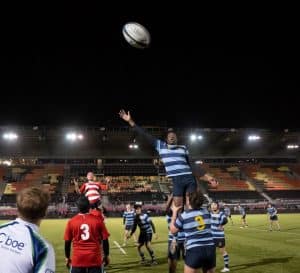 “The second half saw us playing against the elements and into an increasingly strong wind. Habs made full use of this advantage and pinned us deep within our half from the kick-off. Despite us clearing our lines reasonably well, Habs threw the ball wide to create an overlap and break our defence to go over for the score.”
“The second half saw us playing against the elements and into an increasingly strong wind. Habs made full use of this advantage and pinned us deep within our half from the kick-off. Despite us clearing our lines reasonably well, Habs threw the ball wide to create an overlap and break our defence to go over for the score.”
Habs scored an “excellent conversion”, leaving QE holding a narrow 10-7 lead. “After an injury stoppage, a typically strong QE scrum gave our backline a platform to play from, and the backs showed some excellent skills to move the ball wide behind several decoy runners and stretch and test Habs on the outside, but to no avail. Several penalties were conceded to cost us field position, and the pressure was starting to mount. Habs kicked a penalty in front of the posts to level the score at 10-10 and swing momentum in their favour. Following some initial strong defence, Habs’ again threatened out wide and their speedster slipped a tackle to score in the far corner. Advantage Habs’ with the score now 15-10 to them.
“For the final ten minutes of the match, QE had a sustained amount of possession and were ‘camped’ at the right end of the field. Habs were out on their feet, with players continuously going down with cramp and the game being stopped and started, which only added to the tension of a one-score game. After several penalties against Habs, QE had one final attempt, but couldn’t quite get the ball to stick and were thwarted in their attempts to overturn the early season result.”
 “Special mentions must go to the leadership group of captain Alexandre Lee and his two vice-captains Conor Parker-Delves and Ronak Santilale,” said Mr Clarke. Player of the match was Alex Diamond.
“Special mentions must go to the leadership group of captain Alexandre Lee and his two vice-captains Conor Parker-Delves and Ronak Santilale,” said Mr Clarke. Player of the match was Alex Diamond.
The QE First XV squad
1. Ronak Santilale – vice-captain (Year 13); 2. Manav Khindri (Year 13); 3. Victor Angelov (Year 12); 4. Jayden Savage (Year 13); 5. Nnanna Okore (Year 13); 6. Aditya Narayan (Year 13); 7. Alexandre Lee – captain (Year 13); 8. Kelvin Aye (Year 12); 9. Taro Niimura (Year 11); 10. Danny Adey (Year 12); 11. Shadman Rahman (Year 13); 12. Keir Parker-Delves (Year 11); 13. Harvey Lamb (Year 13); 14. Alex Diamond (Year 13); 15. Saalif Jilani (Year 13).
Replacements: 16. Ryan Jayaraj (Year 12); 17. Ishraq Zamee (Year 13); 18. Dilan Patel (Year 12); 19. Aadarsh Khimasia (Year 13); 20. Alex Woodcock (Year 13).

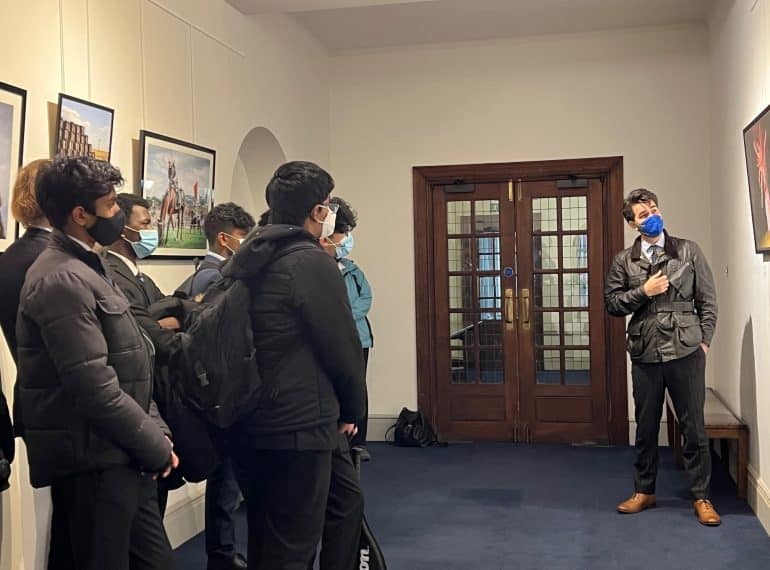
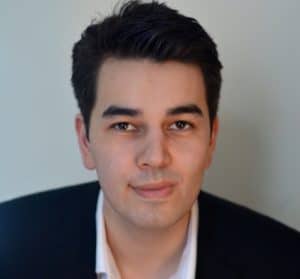 Featuring photography and a number of essays, the exhibition, which marks the tenth anniversary of the nuclear disaster and the earthquake and tsunami that precipitated it, is being held at the Royal Geographical Society in London. The earthquake and tsunami killed more than 15,000 and triggered a triple meltdown at the power station, forcing 200,000 people from their homes.
Featuring photography and a number of essays, the exhibition, which marks the tenth anniversary of the nuclear disaster and the earthquake and tsunami that precipitated it, is being held at the Royal Geographical Society in London. The earthquake and tsunami killed more than 15,000 and triggered a triple meltdown at the power station, forcing 200,000 people from their homes. The exhibition, entitled Picturing the Invisible, sees his research interests coming together with his longstanding engagement with the London art scene: while in the Sixth Form at QE, he took part in in the Royal Academy’s attRAct programme and in the Louis Vuitton Young Arts Program; he has also been an Event Manager at the OPEN Ealing community art gallery.
The exhibition, entitled Picturing the Invisible, sees his research interests coming together with his longstanding engagement with the London art scene: while in the Sixth Form at QE, he took part in in the Royal Academy’s attRAct programme and in the Louis Vuitton Young Arts Program; he has also been an Event Manager at the OPEN Ealing community art gallery.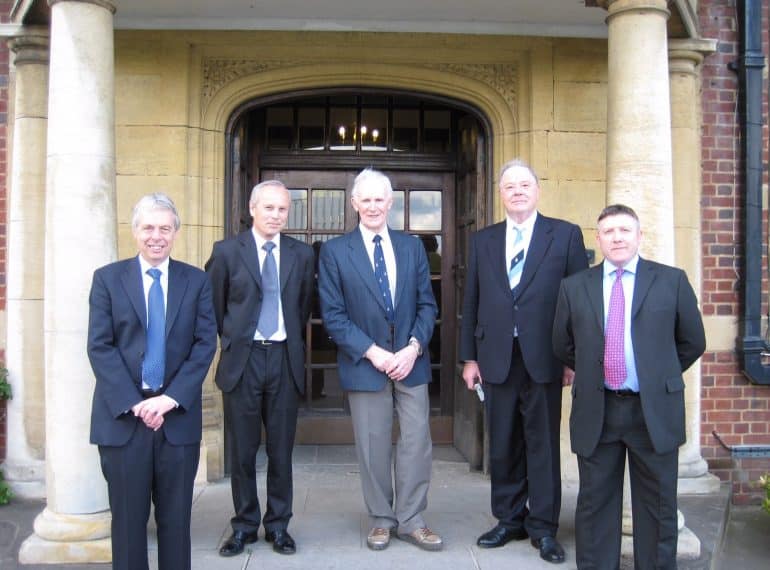
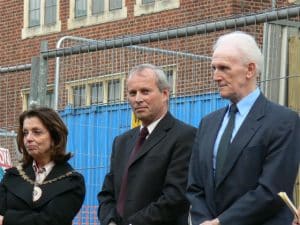 Mr Enright’s predecessor, Dr John Marincowitz, Headmaster from 1999 to 2011, said: “I am saddened to hear of Sid Clark’s death. His enormous contribution as an educator over three decades in the Chemistry labs benefitted many boys. It was however, as Trustee and Governor for much of my Headship that I appreciated Sid most. He gave dedicated service as treasurer, securing FQE’s finances at a time of rapid growth and challenging capital projects. As Governor, he provided wise counsel and stalwart support.
Mr Enright’s predecessor, Dr John Marincowitz, Headmaster from 1999 to 2011, said: “I am saddened to hear of Sid Clark’s death. His enormous contribution as an educator over three decades in the Chemistry labs benefitted many boys. It was however, as Trustee and Governor for much of my Headship that I appreciated Sid most. He gave dedicated service as treasurer, securing FQE’s finances at a time of rapid growth and challenging capital projects. As Governor, he provided wise counsel and stalwart support. Mr Houston, who remained in touch with Mr Clark and visited him in New Zealand (pictured left), where he moved in 2008, said: “Sid was so proud of the School’s outstanding achievements but it is true that he had a huge part to play in making this possible. He never sought any credit for his many contributions, but we should acknowledge with gratitude all he did over many years. He leaves a wonderful legacy.”
Mr Houston, who remained in touch with Mr Clark and visited him in New Zealand (pictured left), where he moved in 2008, said: “Sid was so proud of the School’s outstanding achievements but it is true that he had a huge part to play in making this possible. He never sought any credit for his many contributions, but we should acknowledge with gratitude all he did over many years. He leaves a wonderful legacy.”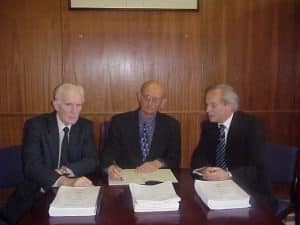 His total commitment to the School did not diminish in the slightest following his retirement in 1987. After QE opted out of local authority control in 1989, he became a Governor, serving for a period as Vice Chairman, and he unfailingly attended all School functions. He worked on a number of sub-committees and was an influential figure in the School regaining selective status in 1994.
His total commitment to the School did not diminish in the slightest following his retirement in 1987. After QE opted out of local authority control in 1989, he became a Governor, serving for a period as Vice Chairman, and he unfailingly attended all School functions. He worked on a number of sub-committees and was an influential figure in the School regaining selective status in 1994.
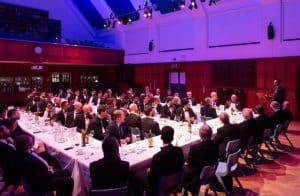 With 76 in attendance, the event in the Main School Hall was the first such formal occasion since the start of the pandemic.
With 76 in attendance, the event in the Main School Hall was the first such formal occasion since the start of the pandemic.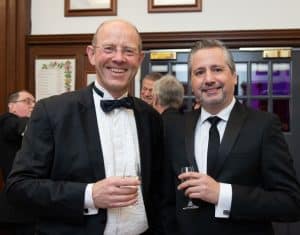 “Such enjoyable social occasions are important in helping OEs keep in touch and re-connect with each other and with us at the School. Pandemic-permitting, I look forward to many similar events in the future and to our providing alumni with other opportunities for them to get involved in supporting the School and the current pupils in various ways.”
“Such enjoyable social occasions are important in helping OEs keep in touch and re-connect with each other and with us at the School. Pandemic-permitting, I look forward to many similar events in the future and to our providing alumni with other opportunities for them to get involved in supporting the School and the current pupils in various ways.” He gave a special welcome to the 450 Club members: named in anticipation of the 450th anniversary of the School in 2023, the club is open to any alumnus who commits to donating £450 to the School before September 2022.
He gave a special welcome to the 450 Club members: named in anticipation of the 450th anniversary of the School in 2023, the club is open to any alumnus who commits to donating £450 to the School before September 2022.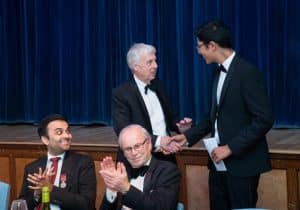 Mr Houston, who is also a Governor, taught at the School from 1976. He was Second Master from 1999 until his retirement in 2010, this period largely overlapping with the 1999-2011 headmastership of Dr John Marincowitz, who was also in attendance at the dinner.
Mr Houston, who is also a Governor, taught at the School from 1976. He was Second Master from 1999 until his retirement in 2010, this period largely overlapping with the 1999-2011 headmastership of Dr John Marincowitz, who was also in attendance at the dinner.
 Outside of the classroom, his “stand-out memories” include the infamous ‘elephant dip’ during cross-country runs and the time he slipped during his 100m race on Sports Day: “It cost me at least a top-three finish, I’d say – and caused a lot of general laughter!”
Outside of the classroom, his “stand-out memories” include the infamous ‘elephant dip’ during cross-country runs and the time he slipped during his 100m race on Sports Day: “It cost me at least a top-three finish, I’d say – and caused a lot of general laughter!”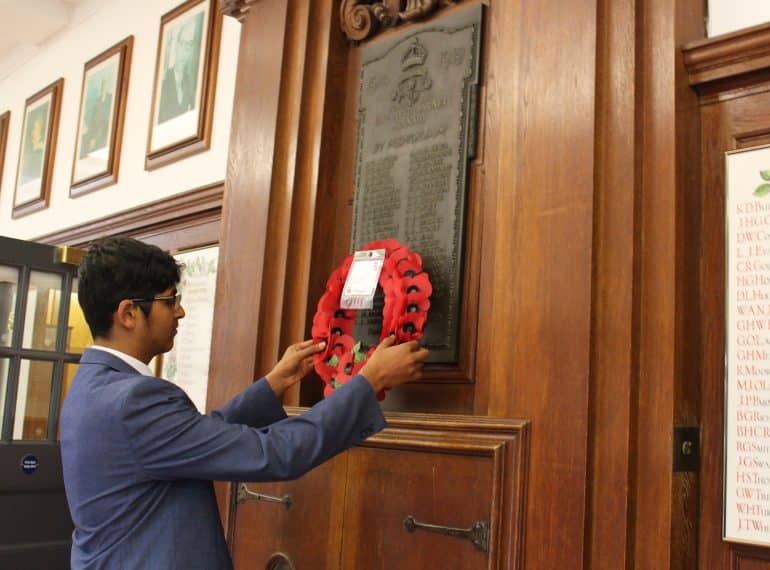
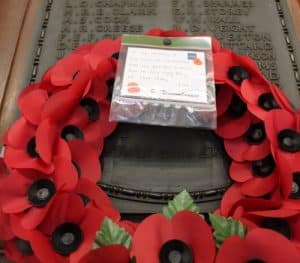 Commissioned at a time when the horrors of the ‘war to end all wars’ were still fresh in the memory, the tablet records the names of 48 Elizabethans who died in the conflict. The memorial may be seen in the ‘crush hall’ of the Main Building, close to the main entrance and Reception.
Commissioned at a time when the horrors of the ‘war to end all wars’ were still fresh in the memory, the tablet records the names of 48 Elizabethans who died in the conflict. The memorial may be seen in the ‘crush hall’ of the Main Building, close to the main entrance and Reception.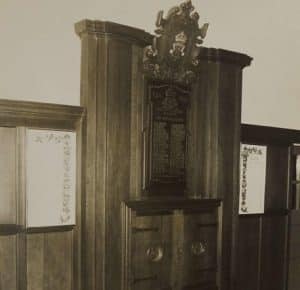 According to the order of service published for the service of dedication, a copy of which
According to the order of service published for the service of dedication, a copy of which